 We just returned from a vacation to the Chesapeake Bay and surrounds. There were so many things I wanted to write about on the road but we never had good enough coverage to upload photos. Pictures are worth the wait, right?
On Monday we drove west out of Ohio and stopped for lunch at the pre-researched Union Cafe in Washington PA. We made our way to Rockville MD by evening and enjoyed a swim in the hotel pool before resting up for the next day.
We just returned from a vacation to the Chesapeake Bay and surrounds. There were so many things I wanted to write about on the road but we never had good enough coverage to upload photos. Pictures are worth the wait, right?
On Monday we drove west out of Ohio and stopped for lunch at the pre-researched Union Cafe in Washington PA. We made our way to Rockville MD by evening and enjoyed a swim in the hotel pool before resting up for the next day.
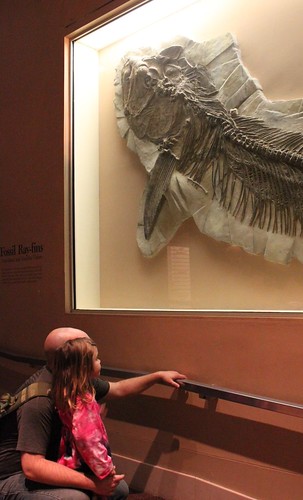 Tuesday was our day to spend in Washington DC. I expected Lil to be thrilled to ride the metro into the city but she was non-plussed. As soon as we hit the National Museum of Natural History, though, she could not stop running excitedly from exhibit to exhibit. We spent most of our time in the Oceans, Dinosaurs, Gems, Minerals, and Mammals halls. We happened to be in the Butterfly exhibit when attendance was light and tickets were free, so we spent some time with live butterflies too. Franklin Park Conservatory in Columbus has a more spacious and beautiful exhibit, in my not unbiased opinion.
Tuesday was our day to spend in Washington DC. I expected Lil to be thrilled to ride the metro into the city but she was non-plussed. As soon as we hit the National Museum of Natural History, though, she could not stop running excitedly from exhibit to exhibit. We spent most of our time in the Oceans, Dinosaurs, Gems, Minerals, and Mammals halls. We happened to be in the Butterfly exhibit when attendance was light and tickets were free, so we spent some time with live butterflies too. Franklin Park Conservatory in Columbus has a more spacious and beautiful exhibit, in my not unbiased opinion.
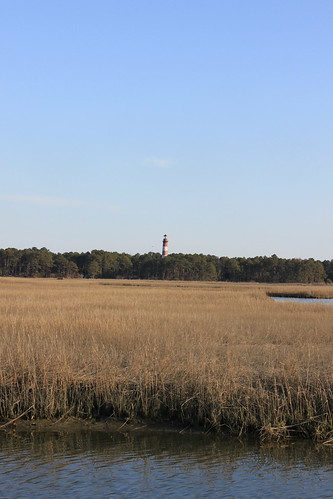 We left DC in the late afternoon to cross the Chesapeake Bay Bridge to Chincoteague Island. We made our way into our vacation rental by the glow of the lighthouse. Our fabulous home away from home, Eagle's View Bayfront Home, will have a post of its own very soon.
We left DC in the late afternoon to cross the Chesapeake Bay Bridge to Chincoteague Island. We made our way into our vacation rental by the glow of the lighthouse. Our fabulous home away from home, Eagle's View Bayfront Home, will have a post of its own very soon.
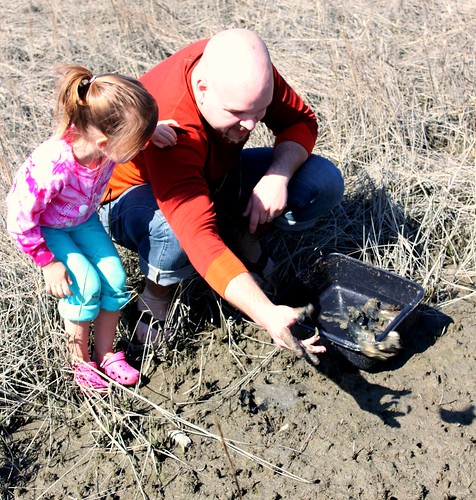 As advertised, the moment we woke up on Wednesday I spotted ponies across the marsh. After harvesting some mussels and oysters from the muck, we drove over to the Chincoteague Island National Wildlife Refuge. We saw more ponies from afar, bald eagles nesting, sika deer, and the endangered Delmarva fox squirrel. Back at the ranch, we made steamed shellfish with asparagus mushroom linguine for dinner. Later, Alex cooked up some fried oysters for an evening snack.
As advertised, the moment we woke up on Wednesday I spotted ponies across the marsh. After harvesting some mussels and oysters from the muck, we drove over to the Chincoteague Island National Wildlife Refuge. We saw more ponies from afar, bald eagles nesting, sika deer, and the endangered Delmarva fox squirrel. Back at the ranch, we made steamed shellfish with asparagus mushroom linguine for dinner. Later, Alex cooked up some fried oysters for an evening snack.
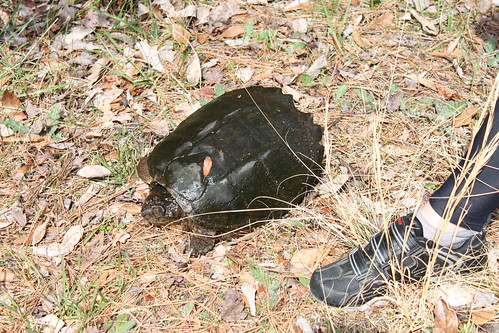 Thursday brought another windy day. We hopped on bikes this time to view Chincoteague Island more closely. Just past the visitor's center we spotted a monstrous snapping turtle. At one of the overlooks I found a snake sunning itself.
Thursday brought another windy day. We hopped on bikes this time to view Chincoteague Island more closely. Just past the visitor's center we spotted a monstrous snapping turtle. At one of the overlooks I found a snake sunning itself.
After ten miles on the bikes we had resigned ourselves to going home without seeing a pony up close when this one walked by.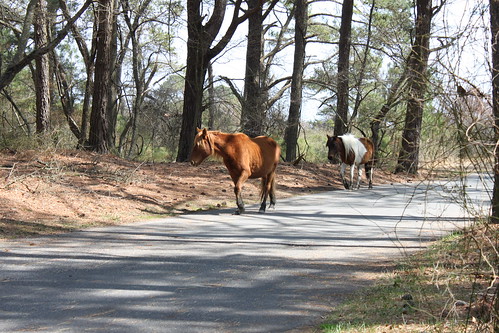
Following her were another ten horses with a stallion prodding them on from behind. We were not fifteen feet away from these wild ponies. Lil was jumping up and down with excitement, not even pausing to take off her bike helmet, while I snapped picture after picture.
Lil was jumping up and down with excitement, not even pausing to take off her bike helmet, while I snapped picture after picture.
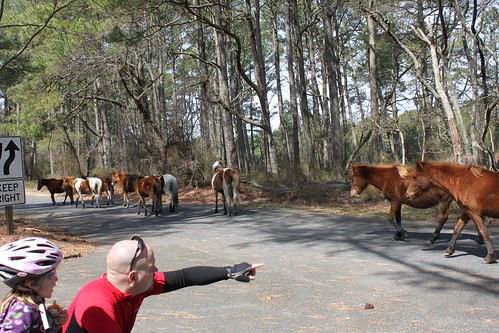
After a bit of lunch and rest, we headed towards the more touristy side of things. Island Creamery was a recommended stop for their homemade ice cream and we were not disappointed. 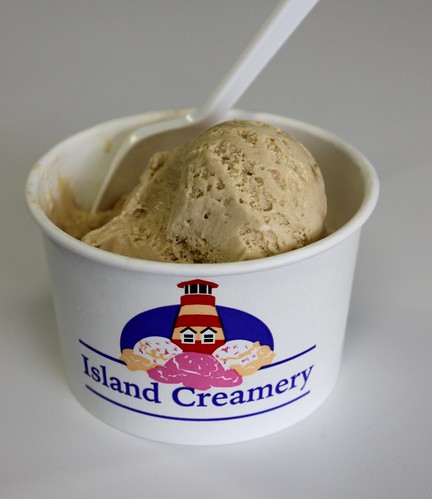 My praline cheesecake was a perfect profile of sweet and salty with crunchy bits of homemade praline laced throughout.
My praline cheesecake was a perfect profile of sweet and salty with crunchy bits of homemade praline laced throughout.
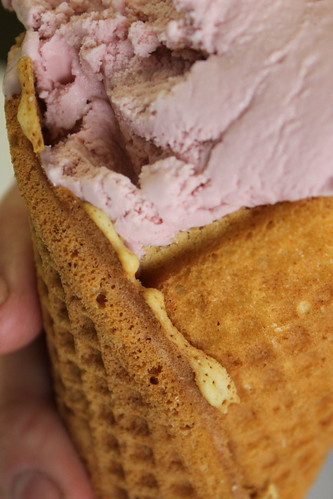 Alex chose cherry brandy with delicious real brandy soaked cherries in a waffle cone. Their dense crumbly cones were unlike any I've seen elsewhere. Lil's chocolate was rich, complex, and clearly tasty. I wish I had more time and room in my tummy to taste enough flavors for a complete review!
Alex chose cherry brandy with delicious real brandy soaked cherries in a waffle cone. Their dense crumbly cones were unlike any I've seen elsewhere. Lil's chocolate was rich, complex, and clearly tasty. I wish I had more time and room in my tummy to taste enough flavors for a complete review!
 We wandered through a few shops that sadly carried very little local memorabilia and did not hold our interest. There is a sweet statue of Misty of Chincoteague near the town center, pictured above.
We wandered through a few shops that sadly carried very little local memorabilia and did not hold our interest. There is a sweet statue of Misty of Chincoteague near the town center, pictured above.
On the way back to the house, we purchased fresh flounder from Gary Howard's. This place was a real-deal fisherman's outlet with hours-old clams, mussels, crabs, oysters, and fish. We cooked up the flounder with stuffed mushrooms and baked sweet potatoes for dinner.
 We left Chincoteague on Friday morning. Lil was sad that we couldn't stay at the house longer and I agreed we could have occupied ourselves for many more days there.
We left Chincoteague on Friday morning. Lil was sad that we couldn't stay at the house longer and I agreed we could have occupied ourselves for many more days there.
We drove a little and met Alex's uncle Peter and aunt Susan at Pirate's Cove restaurant in Shady Side Maryland for lunch. It was fun to catch up with our croquet-playing Chesapeake Bay-loving relatives, especially over regional specialties like cream of crab soup.
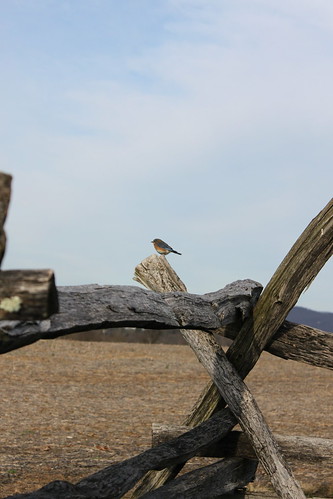
Alex wanted to see Antietam National Battlefield and what a lovely side trip that turned out to be. The weather was cold but sunny and almost no other visitors were there. We followed the split rail fences and viewed the copious monuments to the thousands of soldiers who died. It was humbling to explain the events of the civil war in four year old terms to Lil.
 I took a family picture looking into the sun at this marker to honor Ohio soldiers.
I took a family picture looking into the sun at this marker to honor Ohio soldiers.
Friday evening found us in Hagerstown at another hotel pool. We watched the basketball Buckeyes play Tennessee (and lose) and relaxed before a final day of driving back home today.
The dogs and chickens survived our absence with the help of our lovely neighbor Jan. There was some interesting mail including asparagus crowns. As it always seems to be, the vacation was over too quickly yet we are glad to be home.
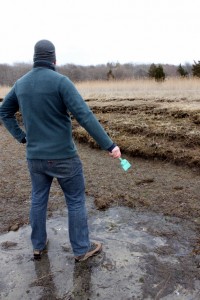
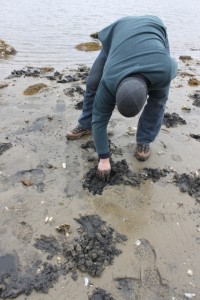
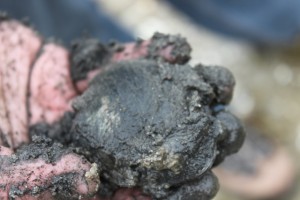
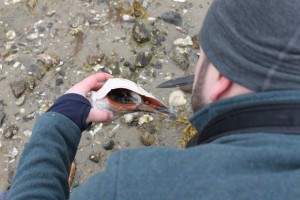
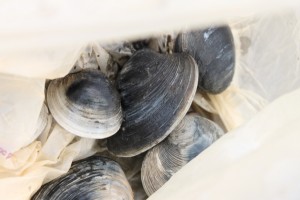

 We just returned from a vacation to the Chesapeake Bay and surrounds. There were so many things I wanted to write about on the road but we never had good enough coverage to upload photos. Pictures are worth the wait, right?
On Monday we drove west out of Ohio and stopped for lunch at the
We just returned from a vacation to the Chesapeake Bay and surrounds. There were so many things I wanted to write about on the road but we never had good enough coverage to upload photos. Pictures are worth the wait, right?
On Monday we drove west out of Ohio and stopped for lunch at the  Tuesday was our day to spend in Washington DC. I expected Lil to be thrilled to ride the metro into the city but she was non-plussed. As soon as we hit the
Tuesday was our day to spend in Washington DC. I expected Lil to be thrilled to ride the metro into the city but she was non-plussed. As soon as we hit the  We left DC in the late afternoon to cross the Chesapeake Bay Bridge to Chincoteague Island. We made our way into our vacation rental by the glow of the lighthouse. Our fabulous home away from home,
We left DC in the late afternoon to cross the Chesapeake Bay Bridge to Chincoteague Island. We made our way into our vacation rental by the glow of the lighthouse. Our fabulous home away from home,  As advertised, the moment we woke up on Wednesday I spotted ponies across the marsh. After harvesting some mussels and oysters from the muck, we drove over to the
As advertised, the moment we woke up on Wednesday I spotted ponies across the marsh. After harvesting some mussels and oysters from the muck, we drove over to the  Thursday brought another windy day. We hopped on bikes this time to view Chincoteague Island more closely. Just past the visitor's center we spotted a monstrous snapping turtle. At one of the overlooks I found a snake sunning itself.
Thursday brought another windy day. We hopped on bikes this time to view Chincoteague Island more closely. Just past the visitor's center we spotted a monstrous snapping turtle. At one of the overlooks I found a snake sunning itself.
 Lil was jumping up and down with excitement, not even pausing to take off her bike helmet, while I snapped picture after picture.
Lil was jumping up and down with excitement, not even pausing to take off her bike helmet, while I snapped picture after picture.

 My praline cheesecake was a perfect profile of sweet and salty with crunchy bits of homemade praline laced throughout.
My praline cheesecake was a perfect profile of sweet and salty with crunchy bits of homemade praline laced throughout. Alex chose cherry brandy with delicious real brandy soaked cherries in a waffle cone. Their dense crumbly cones were unlike any I've seen elsewhere. Lil's chocolate was rich, complex, and clearly tasty. I wish I had more time and room in my tummy to taste enough flavors for a complete review!
Alex chose cherry brandy with delicious real brandy soaked cherries in a waffle cone. Their dense crumbly cones were unlike any I've seen elsewhere. Lil's chocolate was rich, complex, and clearly tasty. I wish I had more time and room in my tummy to taste enough flavors for a complete review! We wandered through a few shops that sadly carried very little local memorabilia and did not hold our interest. There is a sweet statue of Misty of Chincoteague near the town center, pictured above.
We wandered through a few shops that sadly carried very little local memorabilia and did not hold our interest. There is a sweet statue of Misty of Chincoteague near the town center, pictured above. We left Chincoteague on Friday morning. Lil was sad that we couldn't stay at the house longer and I agreed we could have occupied ourselves for many more days there.
We left Chincoteague on Friday morning. Lil was sad that we couldn't stay at the house longer and I agreed we could have occupied ourselves for many more days there.
 I took a family picture looking into the sun at this marker to honor Ohio soldiers.
I took a family picture looking into the sun at this marker to honor Ohio soldiers.


